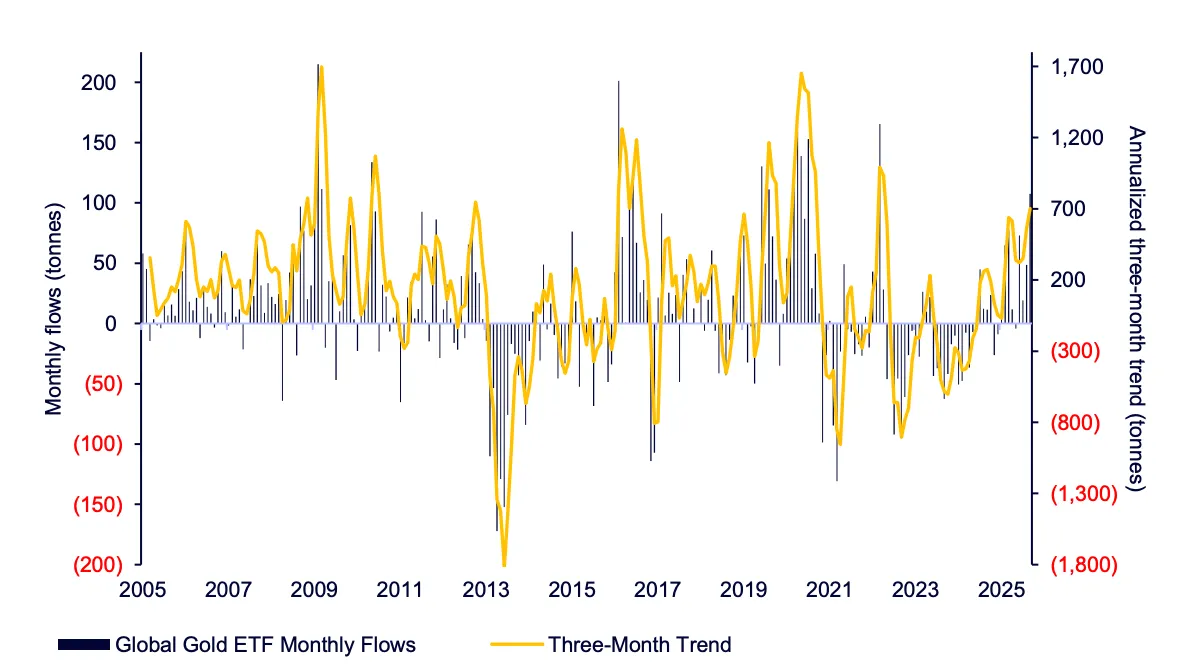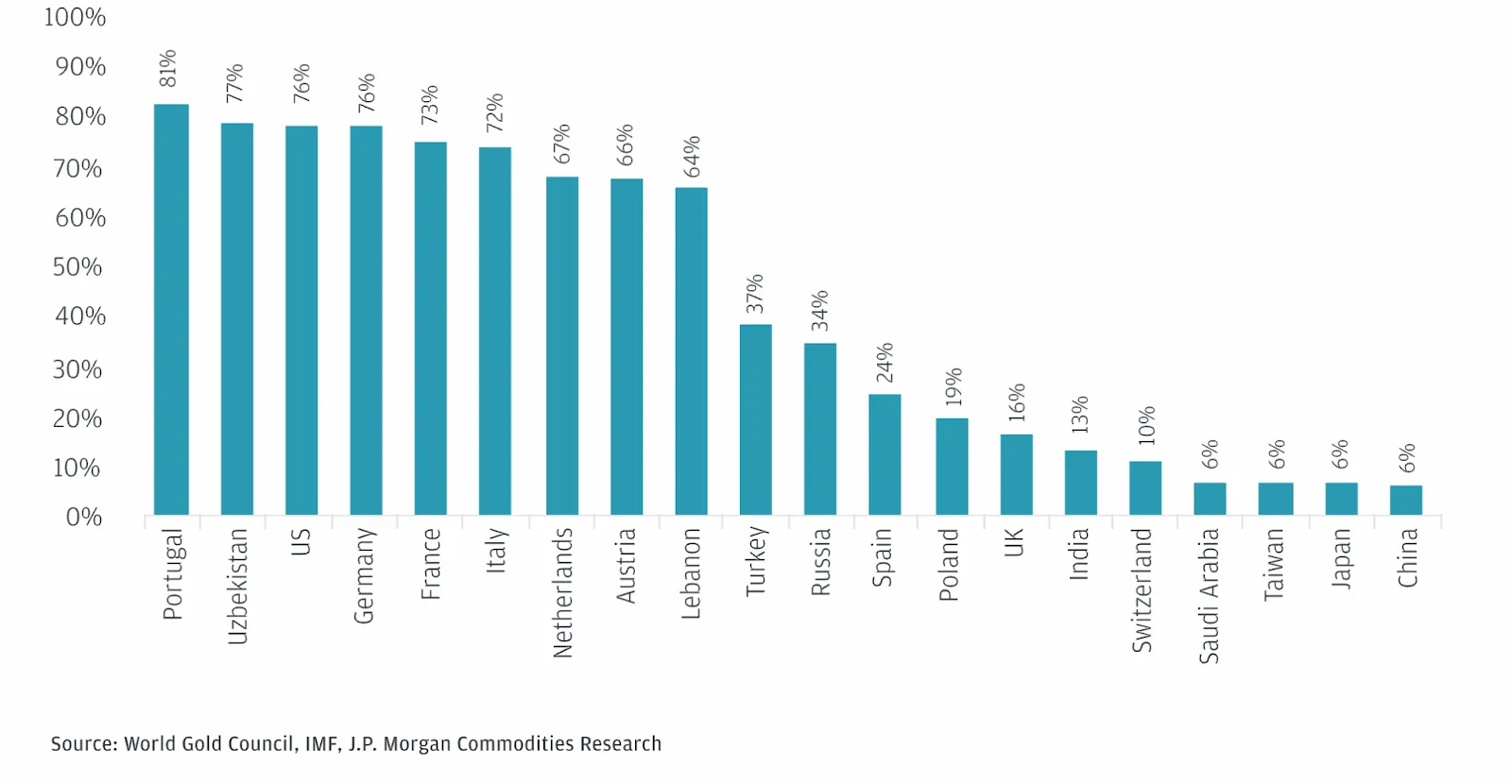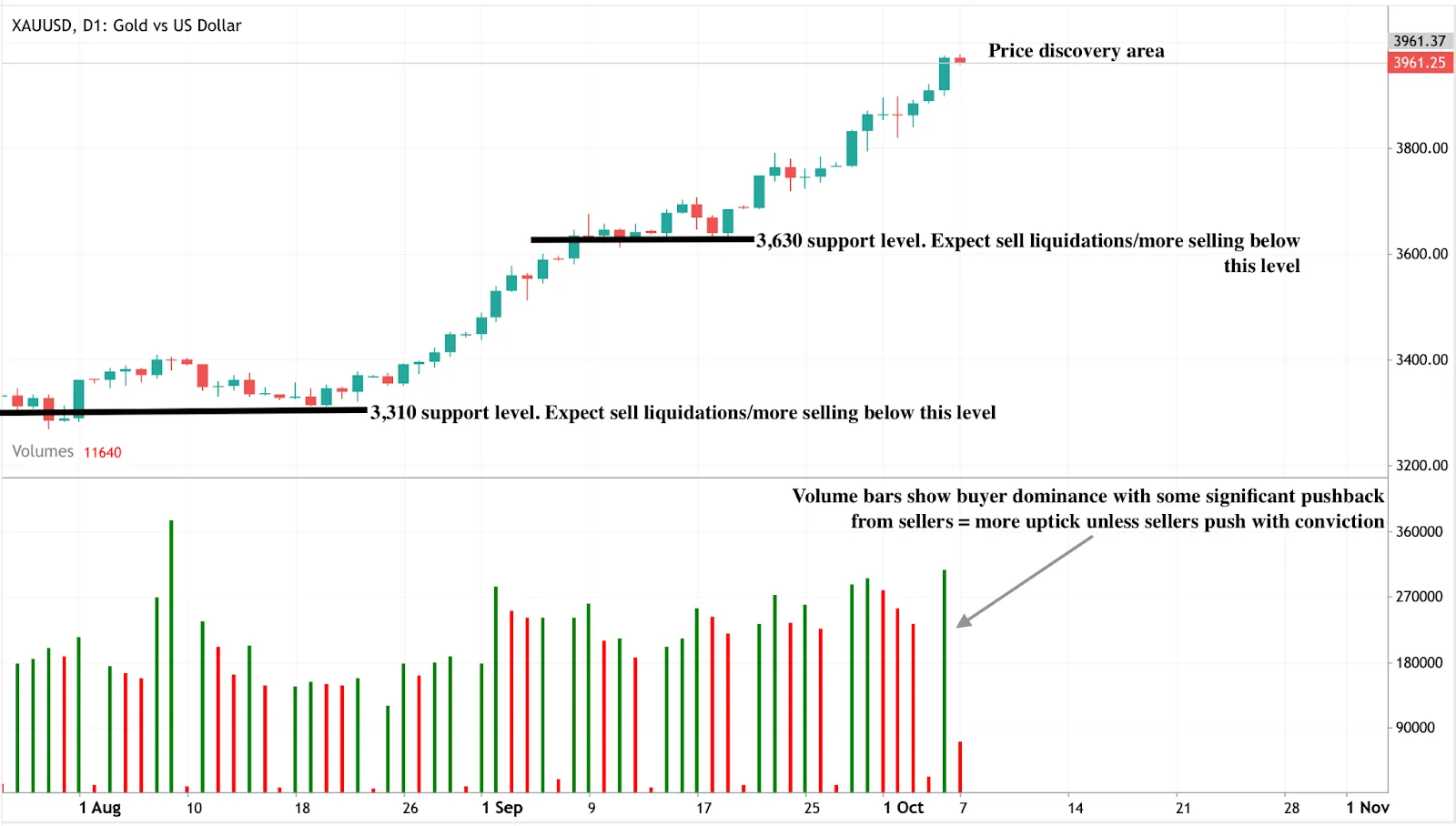Gold price forecast 2025: Will gold break $4,000 and redefine trust in money?

Gold is closing in on the $4,000 mark, trading around $3,970 per ounce - its highest level in history. The rally, up more than 50% year-to-date, reflects a deeper global trend: investors are moving away from paper money and toward tangible value. With central-bank buying, ETF inflows, and a clear de-dollarisation push, gold has become the ultimate “trust hedge” in 2025.
Key takeaways
- Gold has surged 50% YTD, testing $3,970 USD/oz, its strongest finish ever.
- Central-bank purchases: ~80 tonnes per month (World Gold Council, 2025).
- ETF inflows: +200 tonnes in H1 2025 (Bloomberg Financial LP).
- Fed rate-cut probability: 94.6 % (CME FedWatch Tool).
- UBS target: $4,200; Goldman Sachs: $4,900 by 2026.
- Macro theme: De-dollarisation and declining trust in fiat money.
Gold’s record rally - what’s driving it
Gold’s 2025 rally began in March, when prices broke the $3,000 mark, then $3,500 in April, and $3,800 by September. Each breakout has been supported by consistent ETF inflows and central-bank demand, which together are creating structural buying pressure.
Bloomberg data shows gold-backed ETFs expanded by 200 tonnes in the first half of 2025 — the biggest jump since 2020. Traders also increased bullish exposure to the SPDR Gold Shares ETF, reinforcing institutional momentum.

Meanwhile, lower interest rates have made gold more attractive relative to yield-bearing assets. The U.S. Federal Reserve’s 25-bps cut in September, and expectations of another in October, continue to weaken the dollar and fuel demand for safe-haven assets.
Central bank gold buying: De-dollarisation impact on gold
World Gold Council (WGC) data shows central banks across Asia, the Middle East, and Latin America are buying gold at a record pace — averaging 80 tonnes per month this year.
Goldman Sachs forecasts 70–80 tonnes/month of central-bank demand to continue into 2026, signalling a long-term rebalancing of reserves away from the U.S. dollar.
Gold as a percentage of total reserve holdings across select central banks

This shift forms part of a broader de-dollarisation trend, as emerging economies hedge against fiscal volatility and geopolitical shocks. Western institutional investors are following suit, using gold as a stability anchor amid global uncertainty.
JP Morgan notes that CBs haven’t been the only ones increasing their relative share of gold holdings over the last couple of years. In the financial gold markets, investors’ futures positioning remains long, with an expectation that the price will rise in value in the future. Non-commercial futures and option long positions in COMEX gold - the primary futures and options market for trading metals - reached a new high in 2024 in real terms.
The macro backdrop: trust under pressure
The U.S. government shutdown in September halted official economic data, forcing markets to rely on private estimates. ABC News reports that this disruption could shave up to 2.4 percentage points off Q4 GDP if prolonged.
Amid data blackouts, the Federal Reserve faces higher uncertainty, driving markets to favour stable assets like gold.
In Europe and Asia, higher bond yields, fiscal strain, and political volatility have further strengthened the narrative that gold is not just an inflation hedge — it’s a trust hedge.
Is $4,000 a ceiling or just a checkpoint?
Analysts are divided.
- UBS forecasts $4,200 by year-end.
- Goldman Sachs raised its 2026 target to $4,900.
Technical data from Deriv MT5 shows strong buying volume, though near-term consolidation around $3,970–$4,000 is possible. If buyers hold this zone, a breakout could push gold toward $4,200+. Support levels remain firm at $3,630 and $3,310.
Gold technical levels (Deriv MT5 daily chart)
From fear trade to faith trade
Gold’s 2025 surge is not a reaction to panic - it’s a re-pricing of faith. As one strategist put it: “This isn’t a crisis move. It’s the market admitting that paper promises have limits.”
Persistent inflation, growing deficits, and geopolitical instability have weakened confidence in fiat systems. Gold has become the new benchmark for financial credibility, serving as both a safe haven and a strategic reserve asset.
How to trade gold on Deriv
Step 1: Choose your platform
Select the Deriv platform that fits your trading style:
- Deriv MT5 – for CFD-based exposure with advanced charting and professional analysis tools.
- Deriv Trader – for fixed-time trades with a simplified, intuitive interface.
- Deriv cTrader – for deep liquidity, high-speed execution, and professional-grade order management.
Step 2: Select your instrument type
Pick the product that matches your trading goals:
- CFDs (Contracts for Difference) – trade rising or falling gold prices with leverage.
- Multipliers – control larger positions with smaller capital, while limiting downside.
- Fixed-time contracts – speculate on short-term price moves with predefined payouts.
Step 3: Apply risk management
Protect your capital before entering a trade:
- Set stop-loss and take-profit orders.
- Calculate position size based on your risk tolerance using Deriv’s trading calculator.
- Practise strategies in demo mode before going live.
Step 4: Execute your trade
Once prepared, place your gold trade on your chosen Deriv platform. Monitor open positions, review margin usage, and adjust orders as price action unfolds.
Gold technical insights: Where is gold headed?
Goldman Sachs projects that gold could reach $4,000 per ounce by mid-2026 and $4,900 by December 2026.
J.P. Morgan, on the other hand, expects gold to average $3,675 per ounce in Q4 2025, to approach $4,000 by Q2 2026, driven largely by central bank purchases and persistent market uncertainty. Notably, bullish analysts forecast possible prices as high as $10,000 per ounce by 2030 if current trends continue, though this scenario depends on ongoing global economic fragility and geopolitical instability.
Some technical indicators suggest gold is in "extremely overbought" territory, making short-term price corrections possible before further gains. Key support levels are now above $3,800, with resistance at around $3,900 and $4,000, and downside risk if central bank demand slows or geopolitical tensions ease.

Disclaimer:
The performance figures quoted are not a guarantee of future performance.



